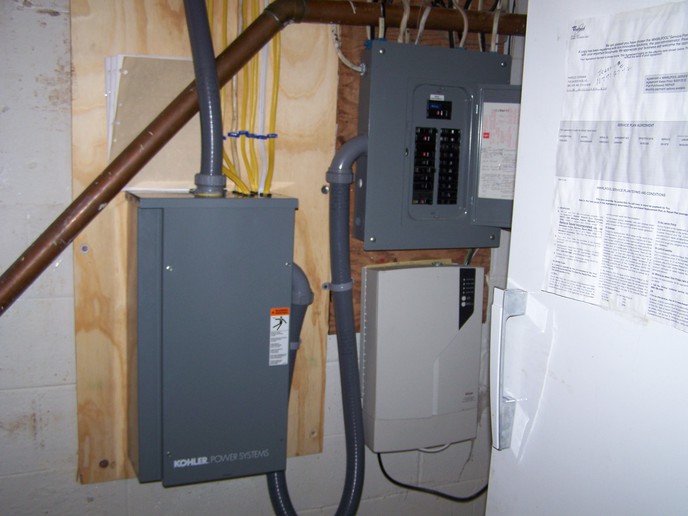B&D you posted a link to a generator transfer box that had the slots for 8 breakers. I am not familiar with these type of transfer setups. The ones we have on my farm and two of the houses switch the entire house/farm at the transformer. You then have to turn off enough stuff to match your generator wattage.
I assume that the set up you linked to would be setup like a sub panel??? Meaning that you would have the line supply coming through your normal main box to that box. Then the circuits/breakers going to the things you want to have your generator to run. So when you flip the transfer switch it disconnects the box from the mains and over to your generator supply.
I am interested in this because we need one of these type at my one son's house. A switch setup like we have at the farm would not work very well as his transform pole is not easily accessible. That is where the disconnects/transfers are on the other type setups I have. Plus he only needs a few circuits for his house only. The ones at the farm are for more circuits and watts than a small portable generator would handle.
Some questions that may seem silly:
1) I know the transfer box switches the two "hots and the neutral. How is the "earth" ground handled??? Do you need a separate ground stake just for this box???
2) The circuits that are being switched, they are feed through the transfer box only??? Then it handles which system supplies them???
I am just wanting to get it straight in my head how they work. I do have a certified electrical that inspects all of the work we do. I want to under stand it better so I can asked the questions that should be asked. If I do not understand it at all then we may miss something common. Assumed knowledge is usually where things get messed up. HE is good at looking all the stuff over but I don't want to have to redo a bunch of stuff after he would find we did it wrong.
I assume that the set up you linked to would be setup like a sub panel??? Meaning that you would have the line supply coming through your normal main box to that box. Then the circuits/breakers going to the things you want to have your generator to run. So when you flip the transfer switch it disconnects the box from the mains and over to your generator supply.
I am interested in this because we need one of these type at my one son's house. A switch setup like we have at the farm would not work very well as his transform pole is not easily accessible. That is where the disconnects/transfers are on the other type setups I have. Plus he only needs a few circuits for his house only. The ones at the farm are for more circuits and watts than a small portable generator would handle.
Some questions that may seem silly:
1) I know the transfer box switches the two "hots and the neutral. How is the "earth" ground handled??? Do you need a separate ground stake just for this box???
2) The circuits that are being switched, they are feed through the transfer box only??? Then it handles which system supplies them???
I am just wanting to get it straight in my head how they work. I do have a certified electrical that inspects all of the work we do. I want to under stand it better so I can asked the questions that should be asked. If I do not understand it at all then we may miss something common. Assumed knowledge is usually where things get messed up. HE is good at looking all the stuff over but I don't want to have to redo a bunch of stuff after he would find we did it wrong.


